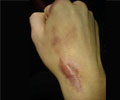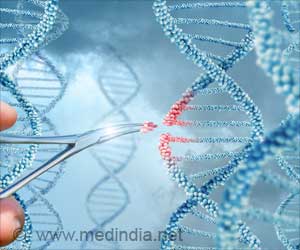A preliminary study has suggested that topical application of a gel made from platelets in healthy individuals’ own blood may help wounds heal more quickly and completely.
A preliminary study has suggested that topical application of a gel made from platelets in healthy individuals’ own blood may help wounds heal more quickly and completely.
Recent innovations have led to devices that can process blood into a concentrated plasma rich in platelets (particles important for blood clotting), and then to an autologous (from the patient’s own body) platelet gel, according to background information in the article. This gel is currently used in surgery to improve healing, but its clinical application remains controversial.David B. Hom, M.D., then of the University of Minnesota School of Medicine and Hennepin County Medical Center, Minneapolis, and now at the University of Cincinnati College of Medicine, and colleagues assessed the effectiveness of autologous platelet gel in eight healthy men and women older than 21 years. Five 4-millimeter skin punch wounds were made 3 centimeters apart on both the right and left upper thighs in all eight individuals.
The autologous platelet gel was applied to the wounds on one leg, while the wounds on the other leg were treated with only an antibiotic ointment or a dressing. The wounds were monitored by the researchers and were digitally photographed for six months, and additional biopsies (removal of skin) were performed on each leg.
During the six-month follow-up, none of the participants developed infections and no serious adverse events were reported. "Over a 42-day period, the autologous platelet gel–treated sites had statistically increased wound closure compared with controls by visual clinical assessment and by digital planimetry [boundary-tracing] photographic measurements," the authors write.
"On day 17, the percentage of closure was 81.1 percent for the autologous platelet gel–treated sites and 57.2 percent for the control sites," they added.
Examination of biopsy specimens revealed that the histologic features of the skin (such as cellular characteristics and microscopic signs of healing) at the treated wound sites looked similar to the skin at the control wounds. However, when the count of platelets in the gel was more than six times the count of platelets in the individual’s blood vessels, new tissue appeared three days earlier in the treated wounds than in the control wounds.
Advertisement
"Further investigations are needed to confirm the consistency of these results. If further studies support these findings, autologous platelet gel treatment during surgery could have a useful impact on the enhancement of postoperative dermal wound healing in surgical patients,” the authors added.
Source-ANI
MED/M









